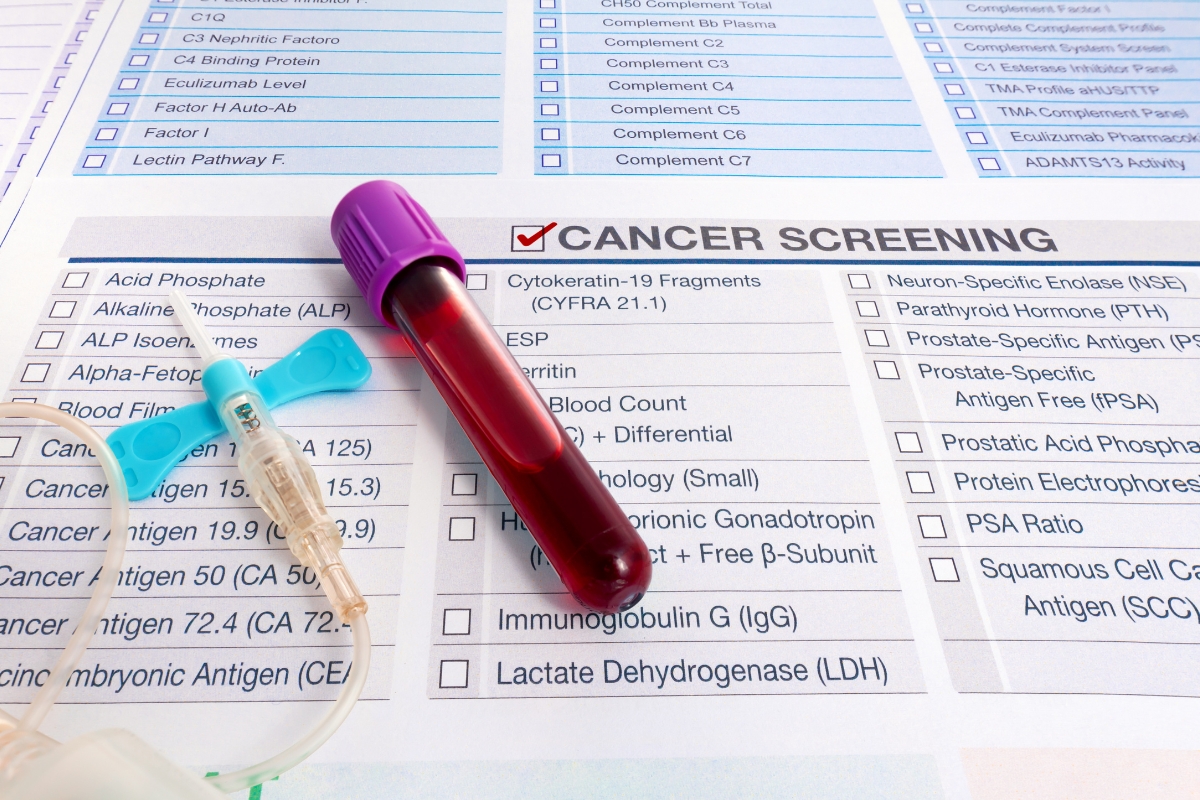As populations age across Asia, clinical laboratories are seeing more elderly patients requiring routine monitoring for chronic conditions. While home blood collection services may seem like a convenient option for seniors, accuracy and safety can easily be compromised outside a controlled clinical environment.
For fragile, polymedicated patients, even minor deviations in sample handling can distort results—sometimes leading to unnecessary medication adjustments or missed warning signs. This is why keeping elderly patients in-clinic for blood tests remains a cornerstone of reliable, data-driven geriatric care.
The Challenge of Geriatric Blood Testing
Older adults often present with complex health profiles: multiple chronic diseases, reduced vascular elasticity, and altered metabolism. Phlebotomy in this population is technically challenging—veins are fragile, capillary refill is slower, and post-draw bruising or hypotension are common.
In such cases, home-based collection may appear convenient but introduces significant risk. Without the temperature control and equipment available in a clinic, specimen integrity can deteriorate within minutes. Fluctuating room temperatures, delayed centrifugation, or improper anticoagulant mixing all distort key biochemical parameters.
Markers such as potassium, glucose, lactate, and coagulation factors are particularly sensitive. A hemolyzed or delayed sample can falsely suggest hyperkalemia, hypoglycemia, or coagulopathy—conditions that may trigger unnecessary interventions or hospital admissions.
For geriatric medicine, where subtle laboratory trends guide long-term therapy, accuracy at the pre-analytical stage determines the reliability of every downstream decision.
Understanding Pre-Analytical Errors and Their Impact
In laboratory medicine, the “pre-analytical phase”—spanning collection, transport, and sample preparation—is the most error-prone step. Studies show that up to 70% of diagnostic mistakes occur before analysis even begins.
These errors are magnified when specimens are drawn outside controlled environments. Home collections may involve inadequate mixing of anticoagulant tubes, mislabeled vials, or exposure to ambient temperatures during transport.
For elderly patients—especially those with cardiac, renal, or hepatic impairment—the consequences can be clinically significant.
-
A falsely elevated creatinine might lead a physician to reduce diuretic dosage, worsening fluid retention.
-
Erroneous liver enzyme readings can delay detection of drug-induced hepatotoxicity.
-
Clotted samples may obscure coagulation disorders in anticoagulated patients.
In short, when pre-analytical errors go unnoticed, they compromise the accuracy of diagnosis and jeopardize therapeutic safety. The chain of trust between clinician and laboratory depends on a controlled collection environment that ensures every sample reflects the patient’s true physiological condition.
The Importance of Immediate Processing
Time is the hidden variable in blood testing. Certain analytes—particularly glucose, lactate, and blood gases—deteriorate rapidly when not processed immediately. Within 30 minutes of collection, glucose levels in unseparated whole blood can drop by up to 7%.
In-clinic testing eliminates this risk.
Immediately after collection, samples undergo:
-
Temperature-controlled handling, preventing degradation of thermolabile analytes.
-
Automated tube inversion and barcoded labeling, ensuring uniform anticoagulant distribution and traceability.
-
Prompt centrifugation and serum separation, stabilizing results before analysis.
This tight control preserves the true metabolic and biochemical profile of the patient, enabling accurate longitudinal comparison across visits.
For chronic disease management—diabetes, hypertension, dyslipidemia, chronic kidney disease—this consistency is essential for determining real progress rather than artifacts of sample handling.
At AsiaLabs and its partner clinics, these protocols are standard. Each sample is logged in real time through a cloud-based Laboratory Information System (LIS), time-stamped, and tracked from draw to analyzer. The outcome: precision, reproducibility, and confidence for both physician and patient.
Clinical Supervision Prevents Complications
Beyond analytical integrity, in-clinic testing protects patient safety during the collection itself.
Elderly or anticoagulated patients are prone to hematoma, prolonged bleeding, or vasovagal syncope during phlebotomy. Within a clinical setting, trained personnel can intervene immediately—using compression, repositioning, or hydration—to stabilize the patient.
Furthermore, supervised collection allows nursing staff to perform crucial pre-test verifications:
-
Medication review: noting recent anticoagulant or corticosteroid use that may alter results.
-
Hydration and fasting checks: ensuring the patient meets pre-test requirements.
-
Observation of physical condition: identifying dizziness, anemia, or edema that may complicate venipuncture.
Such assessments, impossible during unsupervised home collection, are essential for patient safety and accurate result interpretation. The presence of a clinical team transforms blood testing from a transactional act into a monitored medical procedure.

Data Integrity and EMR Integration
In-clinic phlebotomy also ensures that every specimen is correctly linked to the patient’s electronic medical record (EMR). Barcode integration between collection tubes and laboratory systems minimizes transcription errors and enhances traceability.
This seamless digital linkage enables physicians to:
-
Track test trends across months or years.
-
Cross-reference laboratory data with imaging and prescriptions.
-
Receive automated alerts for critical results.
Such traceability is particularly valuable in chronic geriatric management, where clinical decisions rely on cumulative data rather than single values.
By consolidating testing within the clinic’s digital ecosystem, healthcare teams maintain a complete, accurate longitudinal view—critical for adjusting medications, monitoring treatment efficacy, and preventing complications such as nephrotoxicity or metabolic imbalance.
At AsiaLabs, every in-clinic collection automatically syncs to the physician’s dashboard within hours, ensuring real-time access to verified results and reducing delays in clinical decision-making.
Beyond Convenience: Prioritizing Accuracy, Safety, and Continuity
Mobile phlebotomy offers undeniable convenience, but convenience should never outweigh clinical precision—especially in geriatric care. For older adults, physiological changes amplify the consequences of even minor laboratory inaccuracies.
In-clinic testing safeguards three critical dimensions:
-
Accuracy – Controlled conditions preserve sample stability and result fidelity.
-
Safety – Professional supervision prevents procedural complications.
-
Continuity – Integration with digital records ensures longitudinal data consistency.
Together, these elements uphold the standard of care expected in modern medicine. When clinicians can trust every data point, they can manage chronic disease with confidence, adjust therapy earlier, and ultimately improve the patient’s quality of life.
Mobile blood collection service at Asia Labs
At AsiaLabs, we understand that many elderly patients and home-based clinics face a simple but critical barrier: access. Traveling to a hospital for blood tests can be exhausting, time-consuming, and risky for frail or chronically ill patients. That’s why we’ve built a mobile blood collection service—a seamless bridge between your clinic and our accredited laboratory.
Here’s how it works:
-
Collect blood right at your clinic. Your team performs the draw at a familiar, comfortable setting for the patient.
-
AsiaLabs picks it up the same day. Our dedicated logistics network ensures timely transport under temperature-controlled conditions.
-
Results arrive on your dashboard within 24 hours. Through our secure digital platform, physicians can review verified data and track changes over time.
Behind the scenes, AsiaLabs processes more than 80% of routine diagnostic panels—including liver, kidney, lipid, glucose, and complete blood count (CBC) tests—using ISO 15189-certified workflows. Each specimen is barcoded, tracked, and analyzed with hospital-grade precision.
For clinics, this means no patient drop-off, faster turnaround, and stronger continuity of care. For elderly patients, it means aging with dignity—without repeated hospital visits or missed monitoring schedules.
By integrating mobile collection with our digital reporting system, AsiaLabs enables smaller practices to function like full-service diagnostic centers. You deliver comfort and continuity; we deliver the science, accuracy, and speed behind every result.
Blood tests are more than routine—they are the diagnostic compass guiding geriatric care. Keeping elderly patients in-clinic for blood draws is not an inconvenience; it is an investment in accuracy, safety, and long-term health outcomes. By adhering to controlled collection environments, immediate processing, and integrated digital workflows, AsiaLabs and its partner clinics ensure that every test result truly reflects the patient, helping your patients age with dignity—and with better data.

